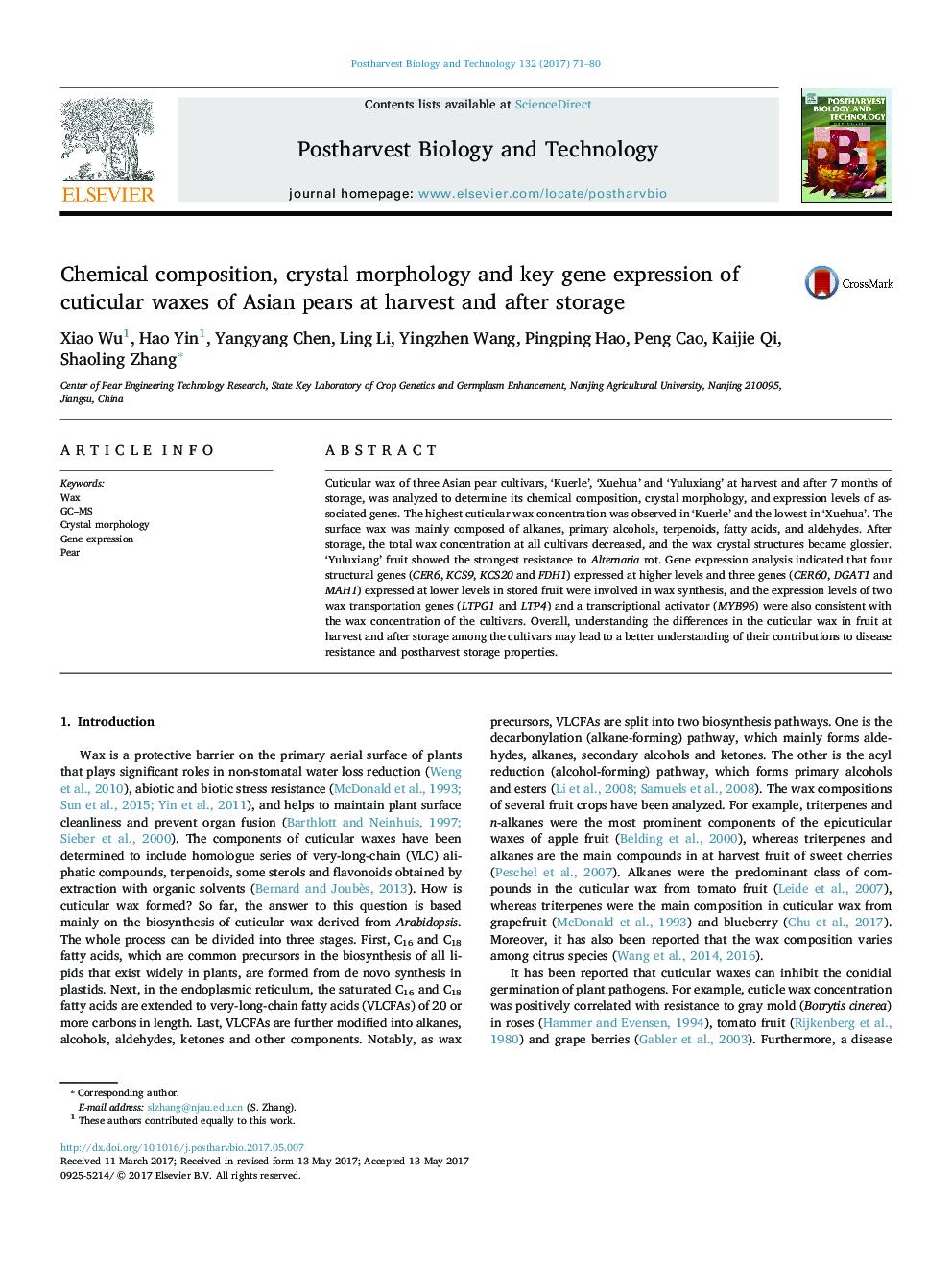| Article ID | Journal | Published Year | Pages | File Type |
|---|---|---|---|---|
| 5762671 | Postharvest Biology and Technology | 2017 | 10 Pages |
Abstract
Cuticular wax of three Asian pear cultivars, 'Kuerle', 'Xuehua' and 'Yuluxiang' at harvest and after 7 months of storage, was analyzed to determine its chemical composition, crystal morphology, and expression levels of associated genes. The highest cuticular wax concentration was observed in 'Kuerle' and the lowest in 'Xuehua'. The surface wax was mainly composed of alkanes, primary alcohols, terpenoids, fatty acids, and aldehydes. After storage, the total wax concentration at all cultivars decreased, and the wax crystal structures became glossier. 'Yuluxiang' fruit showed the strongest resistance to Alternaria rot. Gene expression analysis indicated that four structural genes (CER6, KCS9, KCS20 and FDH1) expressed at higher levels and three genes (CER60, DGAT1 and MAH1) expressed at lower levels in stored fruit were involved in wax synthesis, and the expression levels of two wax transportation genes (LTPG1 and LTP4) and a transcriptional activator (MYB96) were also consistent with the wax concentration of the cultivars. Overall, understanding the differences in the cuticular wax in fruit at harvest and after storage among the cultivars may lead to a better understanding of their contributions to disease resistance and postharvest storage properties.
Related Topics
Life Sciences
Agricultural and Biological Sciences
Agronomy and Crop Science
Authors
Xiao Wu, Hao Yin, Yangyang Chen, Ling Li, Yingzhen Wang, Pingping Hao, Peng Cao, Kaijie Qi, Shaoling Zhang,
